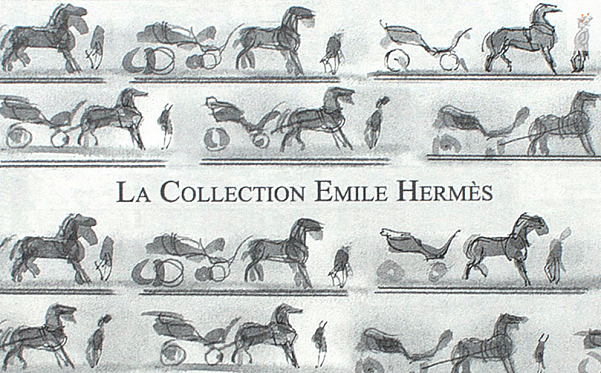Hermès: philosophy of the brand through the love of horses
https://www.traditionrolex.com/42
https://www.traditionrolex.com/42

Most people don't have a clue that the fashion house Hermes was founded on the principles of manufacturing the best gear for equestrian sports, not the bags admired by Grace Kelly and Jane Birkin. Therefore, a horse and a cart are consistently present in the logo of the company.
The history of the fashion house is associated with the name Thierry Hermes - the sixth child in the family of a hotel owner. He was born in the German town of Krefeld in 1801 which was a part of Napoleon's Empire. Having lost his family due to the epidemic and war, the orphan Hermes went to Paris and soon showed his remarkable abilities in leather work; he founded his studio in Grand Boulevard in Paris and in 1837 he opened his first store. By the way, Charles Lewis Tiffany opened the doors of his first jewellery house in New York the very same year. We remembered Tiffany for a reason. Hermes and Tiffany&Co, the brands so different in color, generally have a lot in common. While Tiffany was specializing in stationery and ornaments, Hermes developed harness required for carriages and carts which is also a kind of decoration.
Dynamics of the images of animals, their grace, movement, energy controlled by a human person and intended for pleasure from walks were the basis of the philosophy of Hermes. The work of Thierry Hermes emerged based on the strength of a stitch that people could do with the help of a needle and their own hands. To manufacture saddles it was required to make a double stitch using two needles and waxed threads. The lovely, contoured finished stitch.
Since the 19th century, the studio of the emigrant Hermes supplied harness to virtually all French noble families. So, Thierry’s dream, to found a studio to make truly beautiful harness and bridles for carriages, came true. The company received the first prize of the exhibition in Paris in 1855, and in 1867 Thierry Hermes was awarded the medal of the international exhibition.

After the death of its founder, the company was taken over by his son - Charles-Émile. The store moved to 24 Rue Faubourg Saint-Honoré which was located in the immediate vicinity of the Elysee Palace. It is here where the Hermes innovations were presented: its gorgeous saddles. With the help of his sons, Charles-Emile has established the supply of saddles to Europe, North America, Russia, Asia and North Africa. In 1900, the company first presented a bag that was created specifically for riders so that they would be able to carry their exclusive saddle.
After Charles Emile left the business, his sons Adolphe and Émile-Maurice took the reins in their hands and renamed the company into Hermès Frères. Some time later, Émile-Maurice equipped the Russian Royal family. In 1914, the company employed 80 masters for the production of saddles. A bit later, Émile-Maurice received exclusive rights to use zippers on leather apparel and products. In 1918, the world saw the first-ever golf jacket made, of course, by Hermes. But let’s talk about saddles.

For today, a truly perfect saddle model is Corlandus. It was created by the fashion house Hermes in partnership with the leaders of the European dressage - the winner of the silver medal of the Olympic Games in Seoul in 1988, Margaret Otto Crepin and the athlete Domenic Brussels. They spent several years to achieve a result that is close to perfection. Today we can see the saddle combining the best aspects of German saddles for dressage and comfort which the French Hermes house is famous for.
Author: Edition
https://www.traditionrolex.com/42








Comments (0)